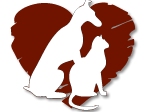Library
-
Each dog is an individual and one standard feeding plan may not work for every pet, but following a set schedule can be beneficial for a number of reasons. For most dogs, two meals per day is best. The use of food toys or interactive feeders can add interest to your dog's mealtime. Routines help your dog adjust to changes that may occur in your home and allow you to monitor their health.
-
Selecting your cat's food is a choice you make to support their health and well-being for each of their life stages. Complete and balanced commercial cat foods are designed to have specific nutrient profiles, and different diet types are available for healthy cats or those with a medical condition. Your veterinarian is always ready to help you make the best nutritional choices for your cat.
-
Selecting your dog’s food is a choice you make to support their health and well-being for each of their life stages. Complete and balanced commercial dog foods are designed to have specific nutrient profiles, and different diet types are available for healthy dogs or those with a medical condition. Your veterinarian is always ready to help you make the best nutritional choices for your dog.
-
Rabbits are herbivores and are considered grazers. Rabbits should have a daily diet of mostly hay, a smaller amount of fresh vegetables, and a limited number of pellets. Hay is the most important part of a rabbit's daily intake. Over-feeding pellets is a common cause of obesity and soft stool. Rabbits must be fed and provided with fresh water daily. Hay should always be available. A pet rabbit's diet should be supplemented with a variety of leafy green vegetables every day. The high sugar content in fruits (and even carrots) may upset the normal GI tract bacteria if given in excess.
-
Once your cat has reached adulthood, their nutrient profile will change from when they were a kitten. Your veterinarian can help you determine what proportion of each nutrient is needed based on your cat's lifestyle and current body condition. It is important to lay a good nutritional foundation to maximize the health and longevity for your cat and reduce the potential for developing obesity.
-
Once your dog reaches adulthood, his nutrient profile changes from when he was a puppy. Your veterinarian can help you determine what proportion of each nutrient is needed based on your dog’s lifestyle and current body condition. Avoid free-feeding and work on a meal schedule. Following these steps can help your dog lead a healthier life and avoid becoming overweight or obese.
-
Feline leukemia virus (FeLV) is a virus that infects only cats. It depresses the immune system and cats tend to remain infected for life. FeLV vaccines have been available for many years and have been continuously improved upon. They are helpful in preventing infection with FeLV and, therefore, in controlling FeLV-related disease. Your veterinarian can discuss the pros and cons of vaccinating your cat against this disease based on her specific lifestyle and risk of exposure.
-
Ferrets should be vaccinated with both the distemper vaccine and rabies vaccine. Some municipalities require yearly rabies vaccinations for ferrets. Vaccine reactions, although uncommon, may occur with either the distemper vaccine or rabies vaccine.
-
Due to their well-deserved reputation as escape artists, ferrets should be housed in a cage that can be securely closed and/or locked. They also need a safe, "ferret-proofed" play area or room where they can explore and investigate while supervised.
-
There are several common diseases or conditions that may affect the pet ferret. Like dogs, ferrets may get heartworms, distemper virus, heat stroke and a variety of cancerous conditions. Yearly veterinary health examinations are recommended to assess overall health.

